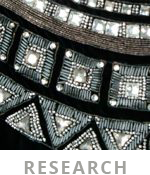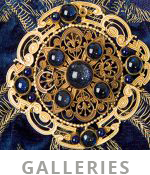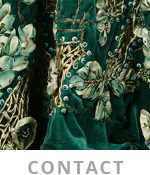Mari Shaw. The Tribout Shop, John Wanamaker’s

Mari Shaw is a former intellectual property lawyer and collector of art and design. She lives in Philadelphia and Berlin and is a writer and consultant to cultural institutions and artists. “The Noble Art of Collecting – Words, Books, and the Spaces They Inhabit” (Sternberg Press, 2017)
Shaw purchased the Christian Lacroix gown at a sale in The Tribout Shop at Wanamaker’s department store in the early 1990’s. One of the first department stores in the United States, Wanamaker’s opened as Wanamaker’s Grand Depot in time to service the public visiting Philadelphia for the American Centennial Exposition of 1876. The reputation of the John Wanamaker stores as artistic centers and temples of the beautiful peaked in the 1910’s to the mid 1930’s. John Wanamaker was an innovator in retail design, customer service and corporate/employee relationships. John Wanamaker & Company offered its employees free medical care, recreational facilities, profit sharing plans, and pensions. The store was the first department store with electrical illumination (1878), the first store with a telephone (1879), and the first store to install pneumatic tubes to transport cash and documents (1880). Wanamaker’s was among the foremost stores to employ buyers to travel overseas to Europe each year for the latest fashions, offering imported luxuries from around the world. In 1924, Rodman Wanamaker purchased The Tribout Shop, a Parisian store, and installed it in its entirety on the third floor facing Chestnut Street, where clientele could also purchase luxury goods from Wanamaker’s elite salons. Customers could lunch in the iconic Crystal Tea Room on the 9th floor where they could enjoy informal modeling. For the next fifty years, The Tribout Shop specialized in exclusive European imports and, since the 1970’s, the very best from American and international designers, such as Christian Lacroix.
Over time, Wanamaker’s lost business to other retail chains, including Bloomingdale’s and Macy’s. In 1986, the now 15-store chain was sold to Woodward & Lothrop and went through a series of acquisitions and re-namings, which was the fate of many of the great department stores in the 1980’s and 1990’s. The name was shortened to Wanamaker’s. On June 21, 1995, Wanamaker’s Inc. was formally dissolved. After 133 consecutive years, the Wanamaker’s name was removed from all stores and replaced with Hecht’s.
Shaw wore the gown to a benefit in 1994 for Girard College where she was a member of the Girard College Advisory Committee for many years. The benefit (dinner and dancing) was held in Girard College ‘s spectacular Founder’s Hall. She attended with her husband Peter and son Zach, and guests Thomas and Jane Sullivan and their daughter Karen ( The Sullivan Construction Company). She also wore the gown to the annual formal event at the Philadelphia law firm Dechert, Price & Rhoads, where she was a partner. For Shaw, collecting is a way to safeguard a particular set of cultural artifacts for some future world to examine and study and, to forge a deeper understanding of the world. The Drexel Digital Museum thanks her for helping us look at the role of fashion in Philadelphia in the 1990’s.
https://museumofnonvisibleart.com/interviews/mari-shaw/
https://www.thedepartmentstoremuseum.org/2010/06/john-wanamaker-philadelphia.html
https://philadelphiaencyclopedia.org/archive/fashion/
https://en.wikipedia.org/wiki/Wanamaker%27s






